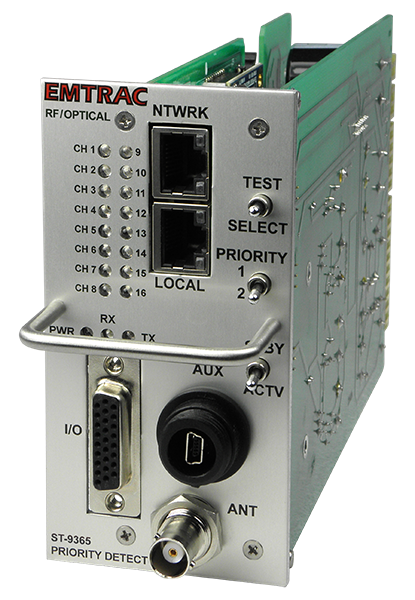
- Detects and calls up to four optical channels while simultaneously detecting EMTRAC RF requests
- Records both optical and RF activity, logging each event by request type
- Logs up to 5,000 locally-stored events (up to 10,000 events with removable memory)
- Signal-phase monitoring and priority-request confirmation
- Standby/Active switch enables testing and configuration without affecting the live signal
- Multiple vehicle priority levels (to accommodate both EVP and TSP)
- Compatible with all major brands of NEMA and 170/2070 controllers
- Optically-isolated outputs (and auxiliary inputs)













